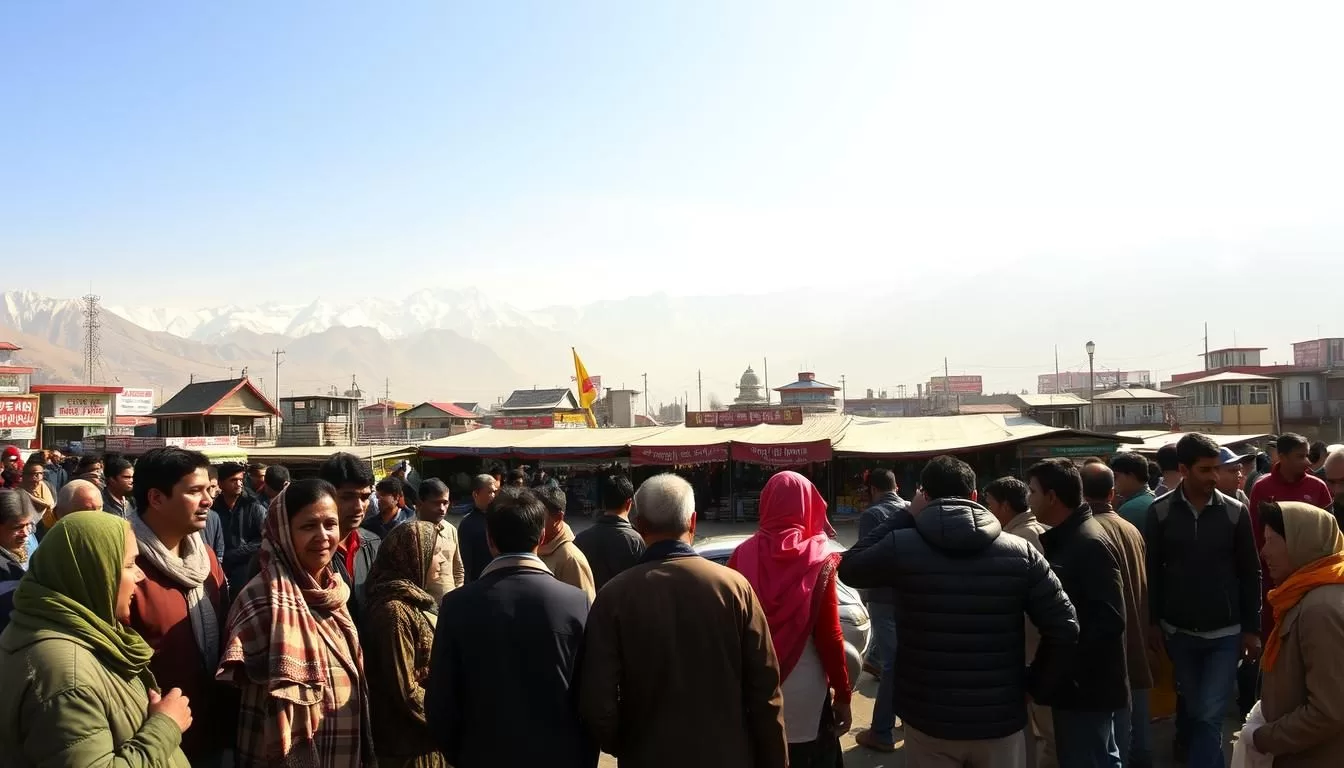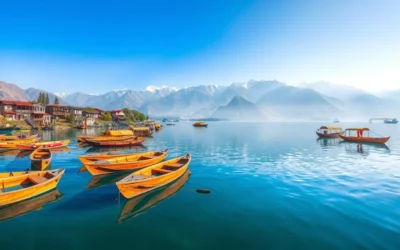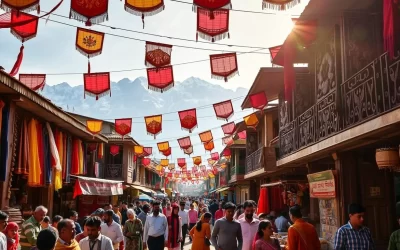✓ Accommodations✓ Flights✓ Rental Cars✓ Tours & Activities
You’re about to explore the fascinating linguistic diversity of Jammu Kashmir, a unique union territory in India. This region stands out for officially recognizing five languages, reflecting its rich culture and complex history.
The official languages of this region are Kashmiri, Dogri, Hindi, English, and Urdu, each carrying its own significance. As you delve into the language landscape, you’ll discover how it represents cultural identity and historical influences.
Understanding the linguistic diversity of Jammu Kashmir not only enhances your appreciation of its heritage but also sets it apart from other Indian states and union territories.
The Linguistic Landscape of Jammu and Kashmir
You will discover that Jammu and Kashmir is home to a multitude of languages, each with its unique cultural significance. The region’s linguistic diversity is a testament to its rich cultural heritage and complex history.
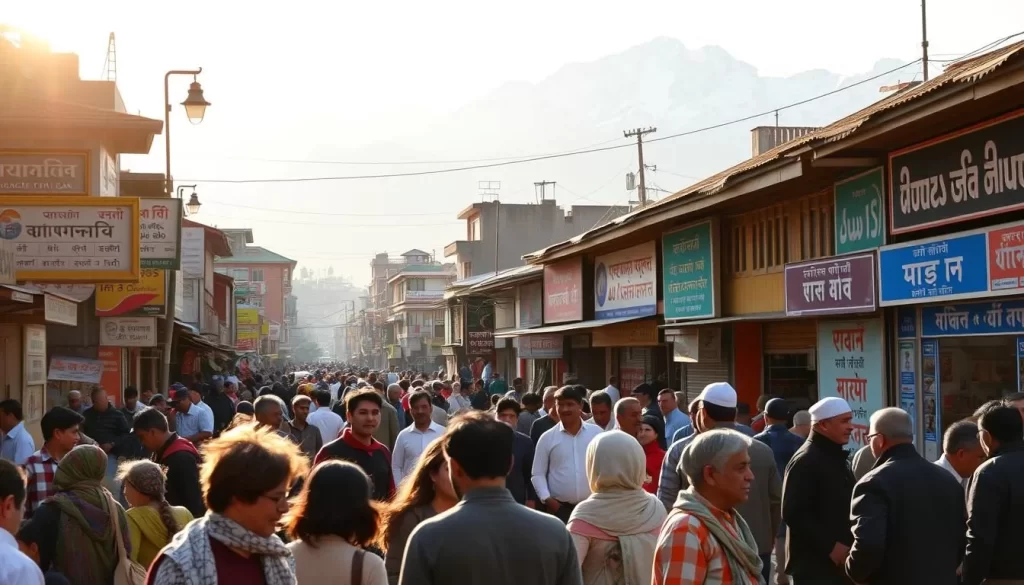
Historical Context of Languages in the Region
The historical context of languages in Jammu and Kashmir has been shaped by various invasions, migrations, and cultural exchanges. The region has been a crossroads of different civilizations, contributing to its linguistic diversity. When a language is given official status, it promotes the creation of literary works, enriching the culture of the state or nation.
Cultural Significance of Language Diversity
The cultural significance of language diversity in Jammu and Kashmir is profound. You’ll appreciate how each language carries distinct cultural traditions, literature, and art forms. The preservation of multiple languages maintains the region’s cultural diversity and heritage. Language serves as a marker of identity for different communities, and the rich oral traditions, folk songs, and literature contribute to the cultural tapestry of Jammu and Kashmir. Moreover, multilingualism is a way of life for many residents, fostering a unique cultural exchange between different communities.
Official Languages of Jammu and Kashmir (UT), India
In a move to better represent the linguistic diversity of the region, the government has introduced new official languages for Jammu and Kashmir, now a Union Territory. This change aims to align the official language policy with the demographic reality of the region.
The J&K Official Languages Bill of 2020
The J&K Official Languages Bill of 2020 is a significant legislation that has redefined the linguistic landscape of the Union Territory. This bill justifies the “official language” status for Kashmiri, Dogri, and Hindi, citing that Urdu and English are spoken by less than 1% of the population. As per the 2011 Census data, Urdu and English were the official languages of the state since 1957, despite being spoken by only 0.17% of the people.
The introduction of this bill marks a shift towards recognizing the languages that are widely spoken in the region. Kashmiri, spoken by 53.25% of the population, and Dogri, spoken by 20.64%, are now given official status, along with Hindi, which is spoken by 2.3% of the population.
Five Official Languages: An Overview
The Union Territory of Jammu and Kashmir now recognizes five official languages: Kashmiri, Dogri, Hindi, Urdu, and English. Each of these languages plays a distinct role in the administrative, educational, and cultural spheres of the region.
Here’s an overview of the demographic distribution of these languages based on the 2011 Census data:
| Language | Percentage of Population |
|---|---|
| Kashmiri | 53.25% |
| Dogri | 20.64% |
| Hindi | 2.3% |
| Urdu | 0.16% |
| English | 0.01% |
The new language policy aims to better represent the linguistic reality of the region. By recognizing Kashmiri, Dogri, and Hindi as official languages, the government is acknowledging the linguistic diversity and cultural heritage of the people of Jammu and Kashmir.
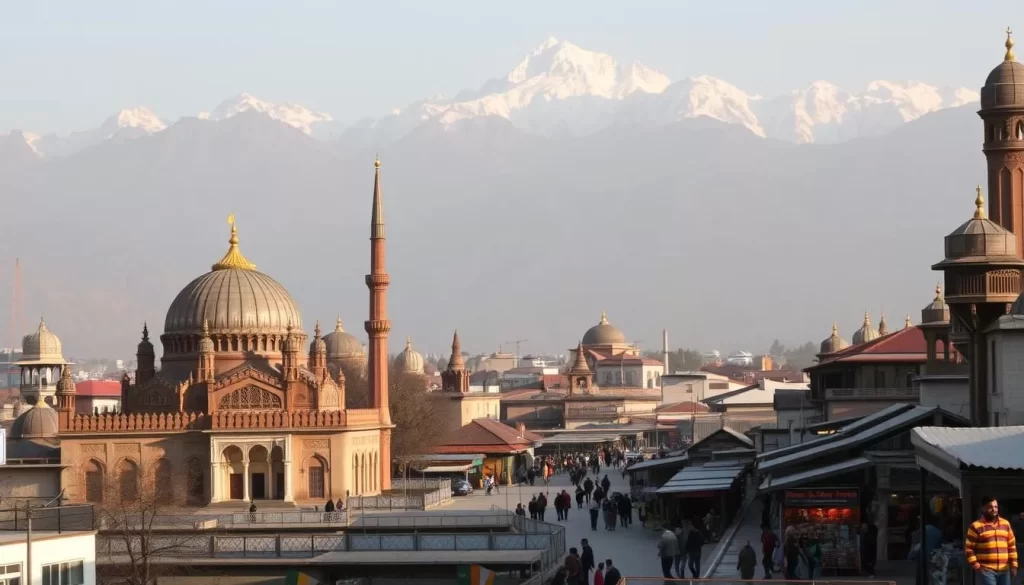
Kashmiri: The Most Widely Spoken Language
As you explore the linguistic landscape of Jammu and Kashmir, you’ll find that Kashmiri stands out as the most widely spoken language. This prominence is not just a reflection of the number of speakers but also of the language’s deep-rooted history and cultural significance in the region.
Kashmiri, also known as Koshur, is an Indo-Aryan language with a unique linguistic identity shaped by the region’s geography and historical interactions. To understand Kashmiri, it’s essential to delve into its linguistic features and the various scripts used to write it.
Linguistic Features and Characteristics
Kashmiri is characterized by its distinct phonology, vocabulary, and grammatical structure. It has been influenced by various languages, including Sanskrit, Persian, and Arabic, reflecting the cultural exchanges and historical events that have shaped the region. One of the notable features of Kashmiri is its tonal system, which differentiates it from many other Indo-Aryan languages.
The language is rich in literary and oral traditions, with a significant body of poetry and folklore. Kashmiri literature encompasses a wide range of genres, from classical poetry to modern writings, reflecting the language’s adaptability and creative vitality.
Writing Systems: Perso-Arabic, Devanagari, and Sharada Scripts
The Kashmiri language has been written in several scripts over the centuries, each with its own historical and cultural significance. Today, Kashmiri is primarily written in the Perso-Arabic script, which has been adapted to include additional characters to represent Kashmiri vowels. This adaptation has enabled the script to accommodate the unique phonetic characteristics of the language.

Historically, the Sharada script was used for Kashmiri and Sanskrit inscriptions from the 8th century until the early 20th century. Although its use has declined, Sharada remains an important part of Kashmir’s cultural heritage. The Devanagari script is also used by some sections of the Kashmiri Pandit community, reflecting the diverse cultural practices within the region.
The use of different scripts for Kashmiri highlights the language’s complex identity and its interaction with various cultural and religious traditions. In recent times, the Roman script has gained popularity, especially in digital communications among the younger generation.
- The Perso-Arabic script is the officially recognized script for Kashmiri, with modifications to represent Kashmiri vowels.
- The Sharada script, although largely historical, continues to hold cultural significance.
- The Devanagari script is used by certain communities, showcasing the linguistic diversity.
- The Roman script is increasingly used in digital communications.
Other Major Languages in Jammu and Kashmir
Beyond Kashmiri, Jammu and Kashmir is home to a multitude of languages that enrich its cultural tapestry. The region’s linguistic diversity is a testament to its rich cultural heritage and the various communities that inhabit it.
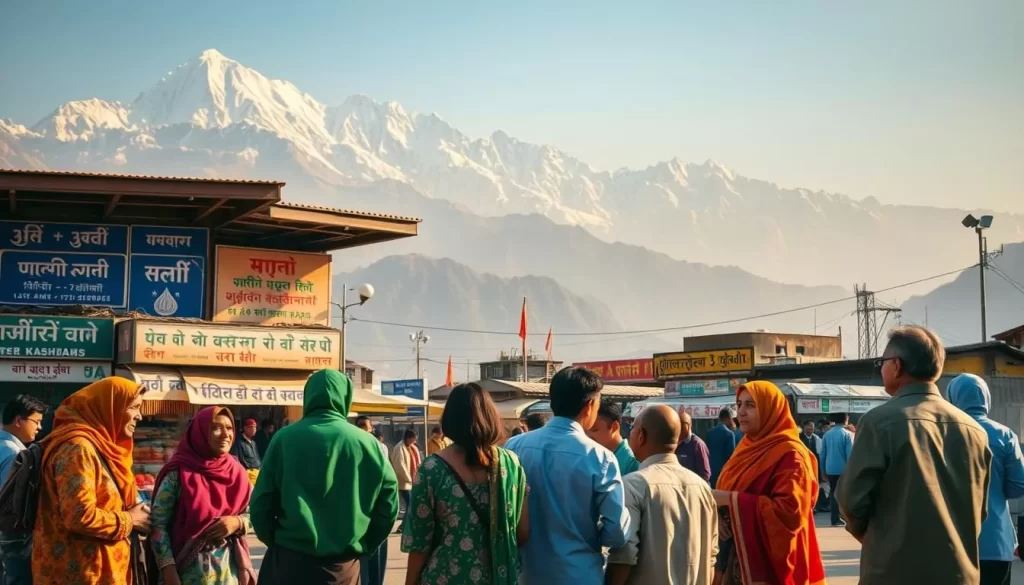
Dogri: Cultural Heritage and Usage
Dogri is another significant language in Jammu and Kashmir, primarily spoken in the Jammu region. It is a part of the Dogri-Kangri language family and has a rich cultural heritage. Efforts have been made to promote Dogri through literature and media, recognizing its importance in the region’s cultural identity.
Urdu and Its Historical Significance
Urdu has historical significance in Jammu and Kashmir, having served as an official language during various periods. It continues to be widely understood and used, particularly in official and educational contexts. The language has played a crucial role in the region’s literary and cultural development.
Hindi and English: National Languages in the Regional Context
Hindi and English are widely used in Jammu and Kashmir, particularly in official, educational, and administrative contexts. They serve as links to the rest of India and the global community, facilitating communication and cultural exchange. Their presence is felt across various aspects of life in the region.
Regional Languages: Gojri, Pahari, and Punjabi
Gojri, Pahari, and Punjabi are significant regional languages spoken by various communities in Jammu and Kashmir. Gojri, spoken by the Gujjar community, is the third most spoken language, with around 9.32% of the population using it. Pahari is spoken by about 8.03% of the population, primarily in the mountainous areas. Punjabi, with historical significance and spoken by approximately 1.78% of the population, has been a subject of advocacy for inclusion in the official language list.
These languages not only contribute to the linguistic diversity of Jammu and Kashmir but also play a vital role in the cultural identity of their respective communities. Advocates for these languages continue to push for their recognition and inclusion in official contexts, highlighting their importance in the region’s social fabric.
Conclusion: The Future of Linguistic Diversity in Jammu and Kashmir
As Jammu and Kashmir continues to evolve as a union territory, its linguistic diversity remains a vital aspect of its cultural identity. You have seen how the official recognition of five languages marks a significant step toward acknowledging the region’s linguistic plurality. The government‘s role in preserving this diversity is crucial, and the use of digital technology offers new opportunities for language preservation and revitalization.
The future of Jammu and Kashmir’s linguistic diversity will depend on both government policies and community efforts. Balanced language policies can contribute to social harmony and cultural preservation. You will appreciate how linguistic diversity remains a vital aspect of Jammu and Kashmir’s cultural identity despite political changes, and its status as a union territory presents both challenges and opportunities for its official languages.
The above is subject to change.
Check back often to TRAVEL.COM for the latest travel tips and deals.
